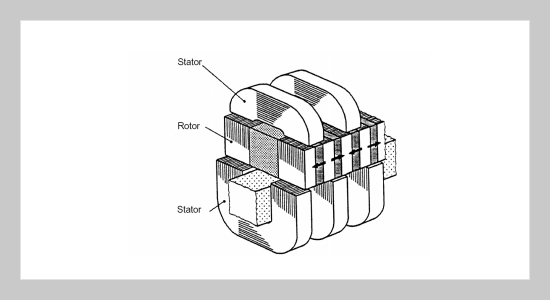REFERENCES
- [1] Weh, H. and May, H., “Achievable Force Density for Permanent Magnet Exited Machines in New Configurations” ICEM’86, Munich (1986).
- [2] Weh, H., Hoffmann, H. and Landrath, J. “New Permanent Magnet Exited Synchronous Machine with High Efficiency at Low Speed” Proceedings of International Conference on Electrical Machines, pp. 3540 (1988).
- [3] Babazadeh, A., Parspour, N. and Hanifi, H., “Transverse Flux Machine for Direct Drive Robots: Modeling and Analysis” IEEE Conference on Robotics, Automation and Mechatronics, Singapore (2004).
- [4] Babazadeh, A., Karimi, H. R. and Parspour, N., “Adaptive Output Tracking of Transfer Flux Permanent Magnet Machines Using High Gain Observer and RBF Neural Networks” 16th IFAC World Congress, Prague (2005).
- [5] Melkote, H. and Khorrami, F., “Nonlinear Adaptive Control of Direct Drive Brushless DC Motors and Applications to Robot Manipulators,” IEEE Transactions on Mechatronics, Vol. 4, pp 7181 (1999).
- [6] Melkote, H., Khorrami, F., Jain, S. and Mattice, M., “Robust Adaptive Control of Variable Reluctance Stepper Motors,” IEEE Transactions on Control Systems Technology, Vol. 7, pp. 212221 (1999).
- [7] Wang, L. X., A Course in Fuzzy Systems and Control Prentice-Hall, Englewood Cliffs, NJ. (1997).
- [8] Tzafestas, S. G. and Zikidis, K. C., “NeuroFAST: On-line Neuro-fuzzy ART-based Structure and Parameter Learning TSK Model” IEEE Transactions on Systems, Man and Cybernetics, Part B, Vol. 31, pp. 797802 (2001).
- [9] Cheng, Y. M., Chen, B. S. and Shiau, F. Y., “Adaptive Wavelet Network Control Design for Nonlinear Systems” Proc. Natl. Counc., Vol. 22, pp. 783799 (1998).
- [10] Polycarpou, M. and Ioannou, P., “Modelling, Identification, and Stable Adaptive Control of Continous-time Nonlinear Dynamical Systems Using Neaural Networks” Proc. Amer. Contr. Conf., pp. 3640 (1992).
- [11] Karimi, H. R., Lohmann, B., Jabedar Maralani, P. and Moshiri, B., “Nonlinear System Identification and Control Design Using Adaptive Wavelet Network,” 6th IFAC Conference on Nonlinear Control Systems, pp. 651 656, Stuttgart, Germany (2004).
- [12] Karimi, H. R. and Babazadeh, A., “Modelling and Output Tracking of Transverse Flux Permanent Magnet Machines Using High Gain Observer and RBF Neural Network” ISA Transactions, Vol. 44, pp. 445 456 (2005).
- [13] Karimi, H. R., Babazadeh, A., Jabedar Maralani, P., Moshiri, B. and Parspour, N. “Sensorless Adaptive Output Tracking of TFPM Machines” Journal of ARI, Vol. 54, pp. 1723 (2005).
- [14] Palit, A. K. and Babuska, R. “Efficient Training Algorithm for Takagi-Sugeno type Neuro-fuzzy Network” IEEE Inter. Fuzzy Systems Conf., pp. 13671371 (2001).
- [15] Seshagiri, S. and Khalil, H., “Output Feedback Control of Nonlinear Systems Using RBF Neural Networks”, IEEE Trans. Neural network, Vol. 11, pp. 6979 (2000).
















